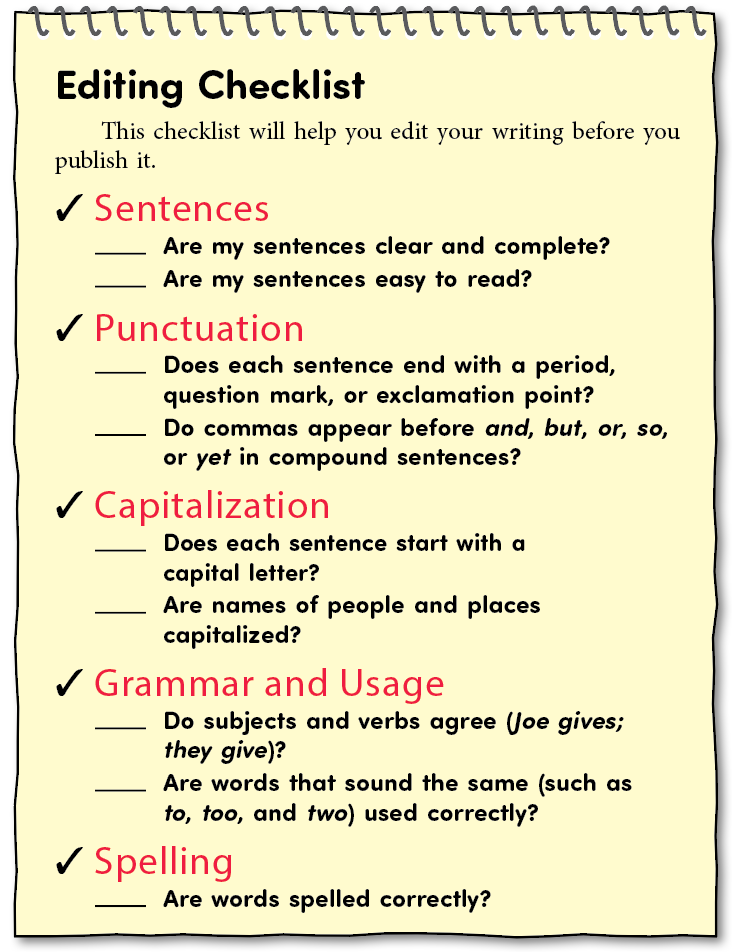WT 030
Page 30
Revising and Editing
Do you remember Pinocchio, the puppet built by the wood-carver Geppetto? Geppetto cut the wood with care, chiseled here, and sanded there. Finally, Pinocchio looked like a real boy and actually came to life!
Improving Your First Draft
As a writer, you are like a wood-carver. You make big changes and little changes until your writing is clear, complete, and correct.
When you revise your writing, you make sure it is clear and complete. When you edit your writing, you make sure it is correct.
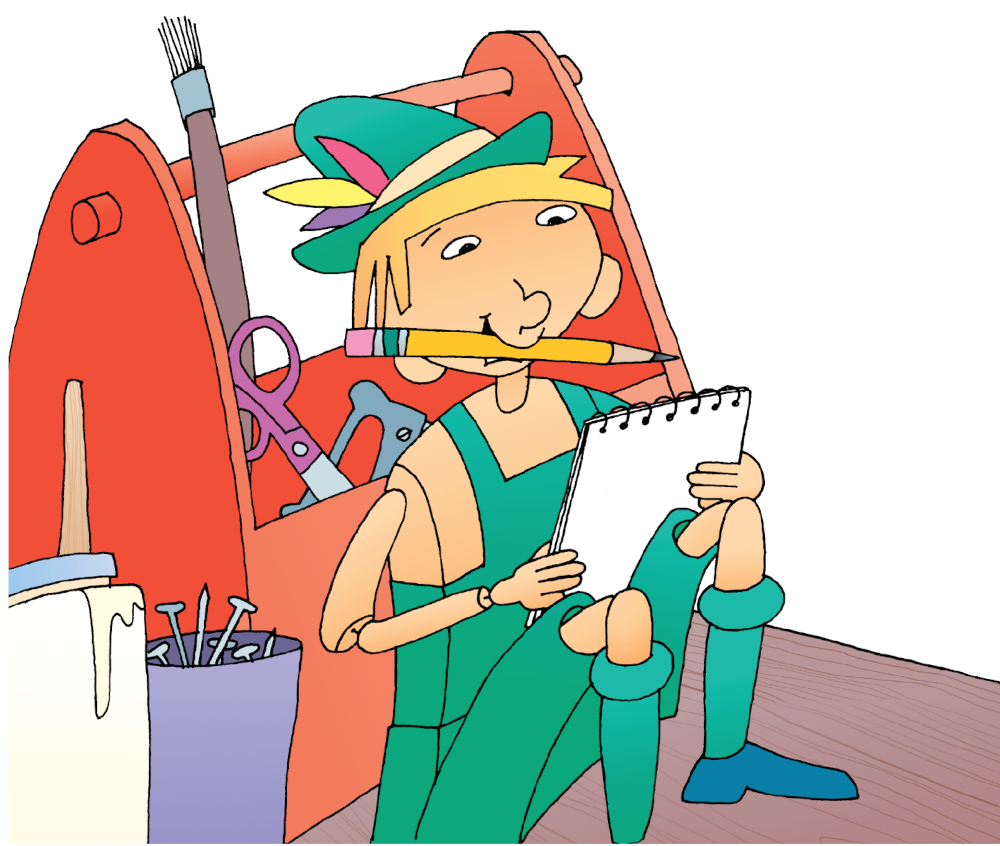
WT 031
Page 31
Revising Your First Draft
1. Read your draft out loud.
- Read it once to get the main idea. Read it again to focus on each part.
- Which parts sound good? (Put a star * next to them.)
- Which parts don’t sound right? (Put a check ✓ next to parts to fix.)
2. Share your draft with classmates.
- Ask which parts they like. (Add a star *.)
- Ask which parts they have questions about. (Add a check ✓.)
3. Check your structure.
- Does your beginning name the topic and get the reader’s interest?
- Does the middle contain many details in a good order?
- Does the ending wrap up your ideas?
4. Review your sentences.
- Are your sentences smooth and easy to read?
5. Check your words.
- Does your writing include specific and interesting words? (See page 33 for help.)
WT 032
Page 32
Checking the Structure
Beginning
Make sure the beginning introduces or names your topic in an interesting way.
One Way
Marionettes have been around a while.
A Better Way
If you’ve seen Pinocchio or the Sound of Music, you’ve seen marionettes—puppets moved with strings. They date back to ancient Egypt and were big in Middle Ages Europe. In 1947, Howdy Doody first appeared on US TV. . . .
Middle
Make sure the middle part describes or tells about your topic.
A puppeteer stands above the marionette and moves it using strings attached to bars. The main string connects to the marionette’s head, and side strings move the hands and feet. Jointed limbs or cloth bodies make the marionette flexible. . . .
Ending
Make sure the ending reminds readers about the topic.
One Way
That is all I have to say about marionettes.
A Better Way
Modern CGI animators have swapped strings for computer commands. Their marionettes come to life and dance without strings, just like Pinocchio!
WT 033
Page 33
Bringing Your Ideas to Life
Show, don’t tell. One of the best ways to bring your writing to life is to “show” instead of “tell.”
Telling
The dragon marionette was cool.
Showing
A three-foot-tall red dragon swooped across the stage, spreading its fiery wings and roaring with daggerlike teeth. Three puppeteers in black bodysuits directed the beast’s movements.
Use the five senses. The authors below use details that help you to experience the northern lights and to hear and feel a thunderstorm.

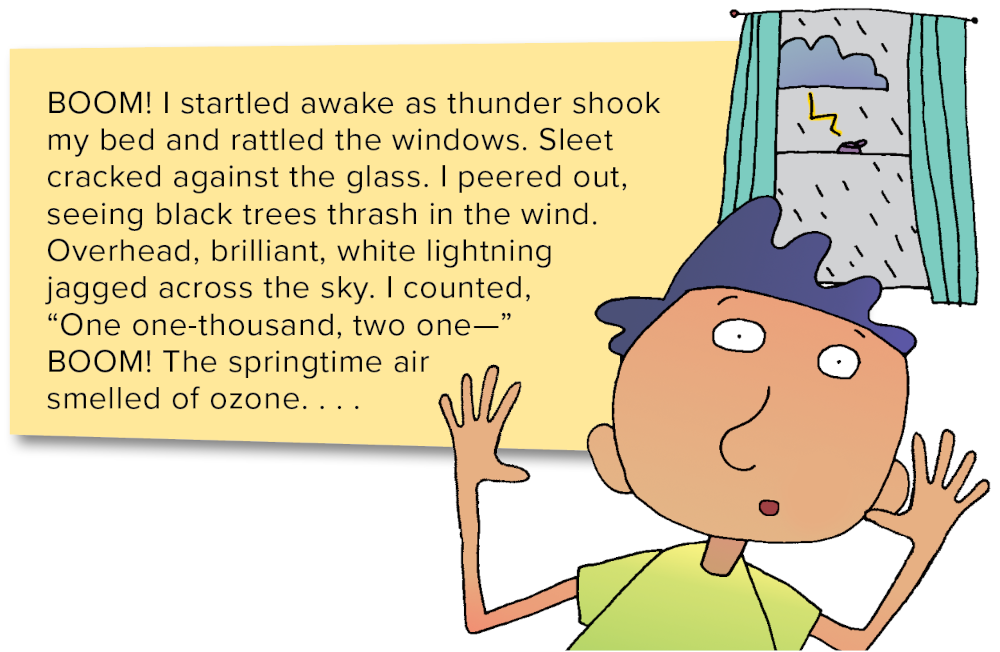
WT 034
Page 34
Check Your Progress
When you revise, use this checklist to track your progress.
Revising Checklist
Does the structure of the writing work well?
_____ Does the beginning start in an interesting way?
_____ Does the beginning also name the topic (focus) or get the story started?
_____ Does the middle part explain or describe the topic or story?
_____ Are the middle details easy to follow?
_____ Does the ending remind the reader about the topic?
Are all of the important ideas included?
_____ Does a topic sentence or focus statement name the main idea of the writing?
_____ Do the details clearly explain the main idea or develop the story?
_____ Do the details show, not just tell?
_____ Do the most important ideas stand out?
_____ Does the writing answer the reader’s main questions about the topic?
WT 035
Page 35
Revising with Partners
You can work with partners during any stage of the writing process, but partners are most helpful during revising and editing. Here’s how working with partners can help you.
After Your First Draft
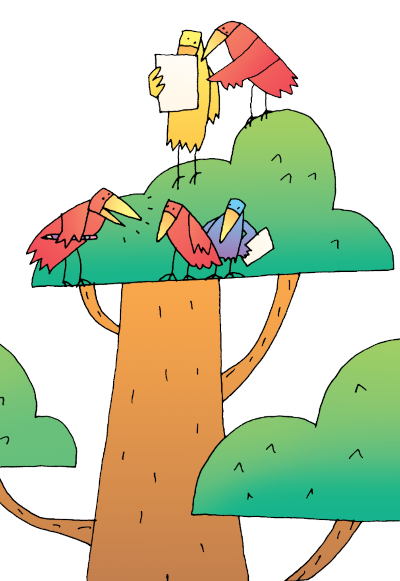
Partners can tell you . . .
- what they like, and
- what parts are unclear or out of order.
As You Revise
Partners can tell you if . . .
- your beginning gets their interest,
- your middle sticks to the topic, and
- your ending is strong.
As You Edit and Proofread
Partners can help you . . .
- find sentence errors,
- choose the right words to use, and
- correct punctuation and spelling errors.
WT 036
Page 36
How to Work with Partners
Read about the roles of writers and listeners.
When You’re the Writer
- Prepare your writing to share. Make sure it is solid and complete.
- Introduce your writing. Explain your topic and purpose and encourage feedback.
- Read your writing aloud. Use your best reading voice.
- Listen to comments. Remember that your partners are trying to help.
When You’re the Listener
- Listen carefully to the writer.
- Fill out a response sheet. See the next page for an example.
- Say one main thing you like about the writing. You can also name other things you like.
- Name at least one way the writing can improve. Focus on ideas and structure. Be specific.
- Be kind and helpful. Your job is to support the writer and help improve the writing.
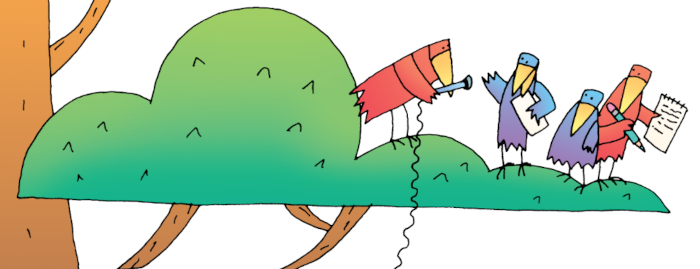
WT 037
Page 37
Using a Response Sheet
You can use a response sheet when you work with a partner. It can help you make comments about your partner’s writing.
Sample Response Sheet
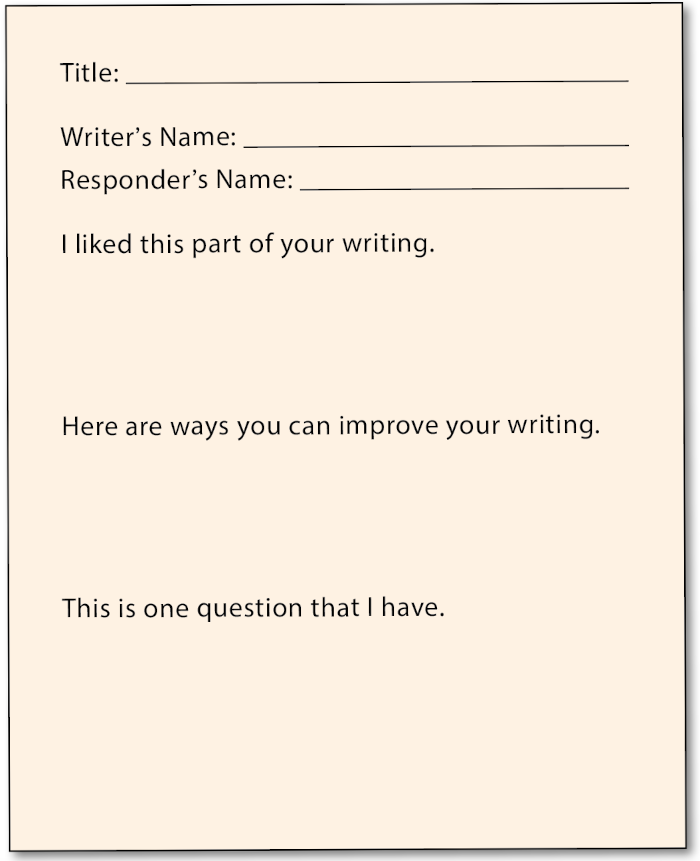
WT 038
Page 38
Editing Your Writing
After you have revised the structure and ideas in your writing, you are ready to edit for conventions. Editing helps you follow the rules of language.
Tips for Editing
Take a step-by-step approach when you edit. For example, you could first check each sentence to make sure it is complete. Then check each for correct end punctuation. Next, review your commas, and so on. Here are some additional tips.
- Know your handbook. The “Proofreader’s Guide” lists all the conventions. (Turn to page 320.) You should also have a dictionary handy.
- Edit on a clean copy of your revised writing. This will make it easier to catch errors.
- Use an editing checklist as a guide. A checklist will help you know what to look for. (See the next page.)
- Have a partner help you. Ask a trusted classmate or adult to check your writing, too. Partners might find errors that you missed.
WT 039
Page 39
